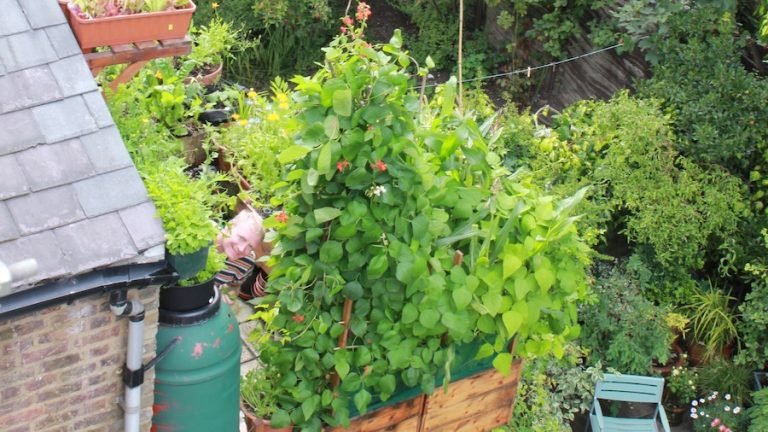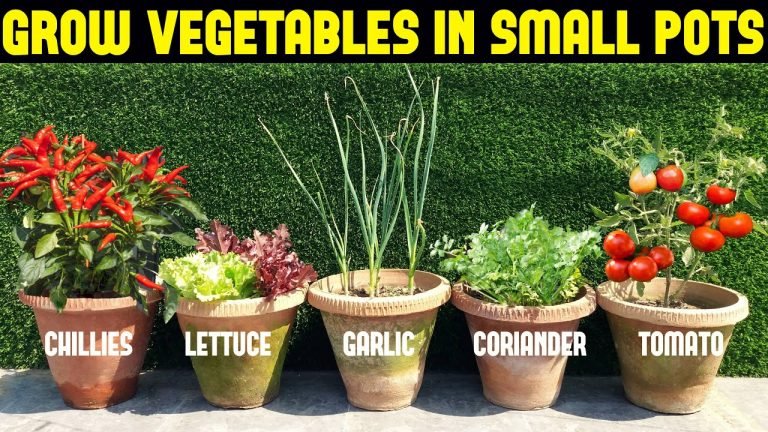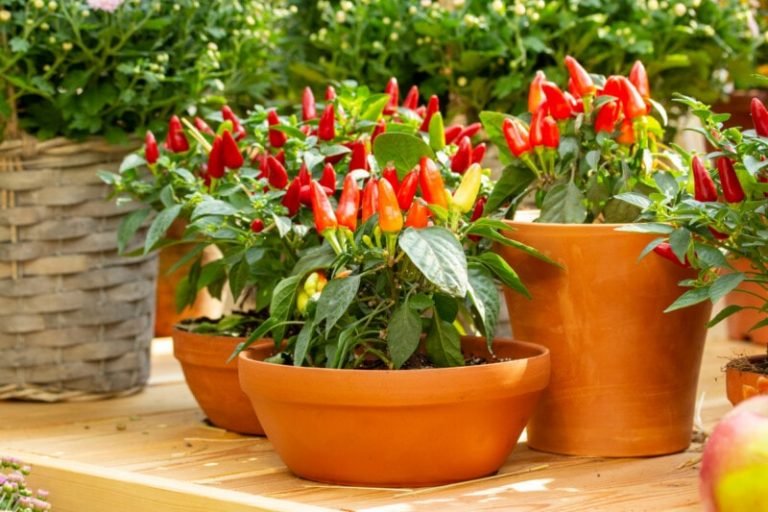how to grow wasabi in a pot – [Beginners Guide]
Hey there! Are you a fan of wasabi, the spicy condiment commonly served with sushi? Have you ever considered growing your own at home? Well, I have some great news for you – growing wasabi in a pot is not only possible, but it’s also a fun and rewarding experience!
I have been growing wasabi in pots for several years now and let me tell you, it’s a game-changer. You’ll never have to worry about running out of wasabi for your sushi nights again, and you can even impress your friends with your green thumb. Plus, the fresh wasabi you grow at home has a much more vibrant flavor compared to the store-bought paste.
In this guide, I’ll walk you through the steps to grow your own wasabi plant in a pot. Whether you live in a small apartment or a house with a yard, you can enjoy fresh wasabi all year round. So, let’s get started!
Pot or container selection
To grow wasabi at home, a pot with a capacity of at least 2-3 gallons is recommended. The size of the pot should be around 12 inches in diameter and 12 inches in depth. This will provide enough space for the roots to grow and allow the plant to reach its full potential.
The pot should be made of a material that is durable, non-toxic and has good drainage capabilities. Plastic or terra cotta pots are good options. It’s important to have good drainage as wasabi prefers moist soil but doesn’t like to be waterlogged. Holes in the bottom of the pot will allow excess water to drain out, preventing root rot and promoting healthy growth.
Note: Wasabi can also be grown in hydroponic systems, in which case the type of pot and its construction will differ.
Make suitable soil mix
To grow wasabi at home, a well-draining soil mix is crucial for optimal growth. A mixture of one part peat moss, one part perlite, and one part coarse sand is a good starting point. This mixture will provide the plant with the necessary nutrients and aeration for healthy root development.
Wasabi prefers soil that is consistently moist, but not waterlogged. A well-draining soil mix will help prevent water from standing in the pot and reduce the risk of root rot. To further ensure good drainage, it is recommended to place a layer of gravel or coarse sand in the bottom of the pot before adding the soil mix.
The soil pH should be between 6.0-7.0. This range is considered neutral and is suitable for most plants, including wasabi. If the soil pH is too high or too low, the plant may not be able to absorb the necessary nutrients and may experience stunted growth or yellowing leaves.
Note: When growing wasabi in a hydroponic system, the type of soil mix will be different and may not be necessary at all.
How to plant the wasabi?
To plant wasabi in a pot at home, follow these steps:
- Prepare the pot: Choose a pot with a capacity of at least 2-3 gallons and make sure it has good drainage holes. Fill the bottom of the pot with a layer of gravel or coarse sand to improve drainage.
- Mix the soil: Mix one part peat moss, one part perlite, and one part coarse sand to create a well-draining soil mix. Fill the pot with the soil mix, leaving about 2 inches of space from the top of the pot.
- Plant the wasabi: Obtain a wasabi cutting or a small wasabi plant. Make a hole in the soil mix, about twice the size of the root ball, and gently place the wasabi in the hole. Fill the hole with soil and gently press down to secure the plant in place.
- Water the plant: Water the plant thoroughly and keep the soil consistently moist, but not waterlogged. Reduce watering frequency in winter when the plant goes dormant.
- Place in proper light: Place the pot in an area that receives bright, indirect light. Wasabi prefers cool, moist conditions and will not do well in direct sun.
Note: Wasabi grows best in temperatures between 55-70°F and high humidity. Consider growing wasabi in a greenhouse or using a humidity dome if you live in a dry climate.
How to care for wasabi?
Watering Requirement
Wasabi plants prefer a consistently moist soil, but do not like to be waterlogged. It’s important to check the soil regularly and water when it feels slightly dry to the touch. In summer, watering once a day may be necessary, while in winter, watering once a week may be sufficient. Overwatering can lead to root rot, so make sure the soil has good drainage and the pot has holes in the bottom to allow excess water to drain out.
Fertilizer Requirement
Wasabi plants do not require frequent fertilizing, but a balanced, all-purpose fertilizer can be applied every 4-6 weeks during the growing season (spring and summer). Avoid using fertilizer when the plant is dormant in winter. It’s also important to avoid over-fertilizing, as this can damage the plant and lead to stunted growth.
Sunlight Needs
Wasabi plants prefer bright, indirect light and do not do well in direct sun. Place the pot in an area that receives good light, but not direct sun. If you live in a hot, sunny climate, consider growing wasabi in a greenhouse or under shade cloth to provide the necessary cool, moist conditions.
Pruning & Training
Wasabi plants do not require frequent pruning, but can be trimmed back if they become too large or leggy. Prune the plant in late winter or early spring, before new growth begins. Pruning will encourage bushier growth and help maintain the plant’s shape.
Other Care
Wasabi plants prefer high humidity, so consider using a humidity dome or placing a tray of water near the plant to increase humidity if you live in a dry climate. The plant may also benefit from occasional misting, especially in low humidity environments. It’s also important to keep the plant away from drafts, as sudden temperature changes can stress the plant and slow its growth.
Common problems
Pests & Insects
Wasabi plants can be susceptible to a variety of pests and insects, including aphids, spider mites, and scale insects. Regularly inspecting the plant and removing any pests by hand can help prevent infestations. In severe cases, an insecticidal soap may be necessary to control the pests.
Diseases
Wasabi plants can be prone to root rot if the soil is waterlogged or if the pot does not have adequate drainage. Overwatering and poor air circulation can also lead to the development of fungal diseases such as powdery mildew. Keeping the soil moist but not waterlogged, providing good air circulation, and avoiding overcrowding can help prevent disease problems.
Poor Production
Poor production of wasabi stems can be caused by a number of factors, including inadequate light, improper watering, and improper soil conditions. Making sure the plant receives bright, indirect light, watering consistently, and providing well-draining soil can help improve wasabi production.
Other Issues
Other common problems with wasabi grown in a pot at home can include stunted growth, yellowing leaves, and slow growth. These issues can be caused by factors such as over-fertilizing, lack of humidity, and sudden temperature changes. Regularly inspecting the plant, providing the correct growing conditions, and avoiding stressors such as drafts and temperature fluctuations can help prevent these issues.
Harvesting & storing homegrown wasabi
Harvesting
Wasabi plants are typically ready to be harvested after 10-12 months of growth. To harvest, simply cut the stems at the base of the plant, making sure to leave some leaves for continued growth. It is best to harvest wasabi in the morning when the stem is firm and the flavor is at its peak.
Knowing When to Harvest
The best way to know when wasabi is ready for harvesting is to observe the plant and check the stem size. When the stem is thick and firm, it is likely ready to be harvested. Additionally, the plant’s leaves will start to yellow, indicating that it is ready to be harvested.
Storing Wasabi
Once harvested, wasabi can be stored in the refrigerator for several weeks. To preserve its flavor and freshness, it is best to store wasabi in a sealed container with a damp cloth. Wasabi can also be frozen for longer-term storage, but the flavor may be slightly compromised.
When ready to use, wasabi should be grated and mixed with water to form a paste. The paste can be used immediately or stored in the refrigerator for later use.
Growing wasabi in container – Conclusion
In conclusion, growing wasabi in a pot is a fun and rewarding experience for any gardener or home cook. By following the steps outlined in this guide, you can successfully cultivate your own wasabi plant and enjoy its fresh and spicy flavor. Here are the key takeaways from this guide:
- Wasabi is a slow-growing plant that prefers shady and moist conditions.
- Use a well-draining potting mix and keep the soil moist but not waterlogged.
- Fertilize the plant regularly with a balanced liquid fertilizer.
- Harvest the wasabi stem when it is large enough and peel the outer skin to reveal the flavorful paste inside.
Give it a try! With a little patience and care, you can have your own wasabi plant in your home. The satisfaction of growing and using your own wasabi is truly a unique and enjoyable experience. Happy gardening!






